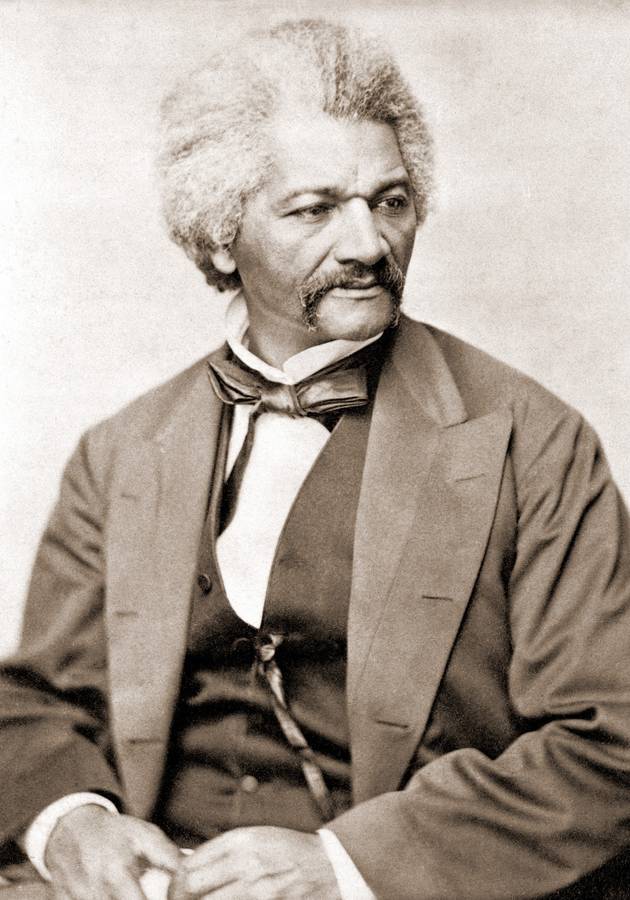As the 20th century began, advertisers started harnessing psychological insights to influence consumer behavior, marking a shift from simple product promotion to emotional persuasion. Edward Bernays, a pioneer in public relations, leveraged psychoanalytic principles to connect products with personal identity and social causes, such as promoting smoking Lucky Strikes as a symbol of women's liberation.
In the late 1970s, the development of "behavioral economics" by psychologists like Daniel Kahneman, Amos Tversky, and Richard Thaler introduced new understandings of decision-making processes. This field, combined with advancements in cognitive psychology and technology, led to the rise of neuromarketing—an approach using brain science to refine marketing strategies.
The scientific pillars of modern advertising
David begins with a historical perspective, tracing the origins of advertising back to early city-states where verbal promotion and street criers were common. For many years, advertising was primarily about maintaining brand visibility without much reliance on scientific methodologies.
The turning point came in the early 20th century with Dr. Walter Dill Scott, who introduced the idea of applying psychology to advertising. Scott's work emphasized understanding the subconscious mind to craft more effective advertisements, shifting the industry’s perception of advertising from mere creative expression to a psychological science aimed at influencing consumer behavior.
John E. Kennedy further revolutionized the field by defining advertising as “salesmanship in print.” This concept framed advertising as a form of personal salesmanship, focusing on persuasion rather than just information dissemination. This perspective aligned with the growing belief that the primary goal of advertising was to persuade and influence consumers.
Following World War I, the influence of psychoanalysts like Ernest Dichter became prominent. Dichter's approach, rooted in psychoanalysis, emphasized the emotional and subconscious aspects of consumer behavior. He believed that understanding and manipulating consumer motivations and desires through psychoanalytic techniques could lead to more emotionally compelling and effective advertising.
In the 1920s, behaviorism emerged as a dominant psychological theory, with figures like John B. Watson applying its principles to advertising. Behaviorism focused on observable behaviors and aimed to control them through rewards and punishments. This approach reduced consumers to predictable subjects whose behaviors could be influenced and controlled systematically.
By the late 1970s, the rise of behavioral economics brought new insights into consumer decision-making. Researchers like Daniel Kahneman and Amos Tversky introduced concepts such as “prospect theory” and “anchoring,” which provided a deeper understanding of how people make choices under risk and uncertainty. These concepts highlighted the irrational aspects of consumer behavior and the ways in which marketers could exploit these biases.
The latest advancement in the field is neuromarketing, which uses neuroscience and brain-imaging technologies like fMRI and EEG to study consumer responses to marketing stimuli. Neuromarketing seeks to measure brain activity directly to understand how consumers respond to advertisements and products. This sophisticated tool allows advertisers to enhance their strategies based on empirical data about brain responses, pushing the boundaries of how science can be used to refine marketing techniques.
Lewis's exploration highlights a significant shift in advertising—from an art form driven by creativity to a science informed by psychology, behaviorism, behavioral economics, and neuroscience. This evolution reflects the increasing reliance on scientific research to understand and influence consumer behavior more effectively, marking a profound change in the way advertising is conceptualized and executed.
Neuromarketing as a revolutionary tool for marketers
David revisits a vivid account from a 2003 marketing conference, where a young man boldly claimed that electrodes attached to a person’s head could read their mind. Initially skeptical, Lewis’s views shifted over the next decade due to advances in brain-imaging technology and a deeper understanding of brain function. He clarifies that while neuromarketers cannot literally read minds, they can monitor subconscious responses to brands and products. This allows them to detect changes in interest and attention, predict which parts of a message will be remembered, and gauge emotional responses and motivation.
Lewis critiques traditional methods for their various shortcomings. People often lie or give socially desirable answers in surveys, and the characteristics of those conducting the research, such as their gender or ethnicity, can significantly influence responses. Moreover, people’s memories are unreliable, often reconstructed with invented details, as illustrated by the New England airship hoax. Traditional market research taps into explicit (conscious) memories, which are frequently inaccurate, whereas neuromarketing accesses implicit (subconscious) memories, providing more reliable insights into consumer behavior.
The author then discusses brain-reading technologies like QEEG (Quantitative Electroencephalography) and fMRI (Functional Magnetic Resonance Imaging). QEEG measures brain waves to study mental states and responses to various stimuli, revealing insights into consumer behavior by monitoring brain activity in real-time. However, it faces challenges such as difficulty detecting deeper brain activity and interference from environmental noise.
fMRI, on the other hand, detects changes in blood flow in the brain to identify active regions, providing insights into decision-making and emotional responses. Despite the challenges and skepticism regarding their scientific validity, Lewis highlights the potential of these technologies in neuromarketing to understand consumer preferences and improve marketing strategies.
In recounting his own journey into neuromarketing, which began in the 1980s with biofeedback research using early EEG technology, David notes the initial skepticism and disinterest from the industry. However, the field has grown significantly, with numerous companies now offering neuromarketing services. He underscores that neuromarketing bypasses the conscious mind to tap directly into subconscious responses, offering a more accurate and detailed understanding of consumer behavior.
Furthermore, Lewis references research by Herbert Krugman, who studied the effects of watching television and reading on brain activity. Krugman found that watching television quickly shifted brain waves from fast-moving beta waves (associated with alertness) to slower alpha waves (indicating relaxation), while reading increased beta waves, signifying attentiveness. This suggests that the brain’s response to television is more emotional and noncritical, driven by the medium rather than the content.
The interplay between mind and body in consumer behavior
The author discusses the concept of embodied cognition, which suggests that the mind and body are intricately connected and influence each other more than previously recognized. He questions the traditional view that the brain can function independently of the body and surroundings. He narrates an experience from his student days, observing an autopsy, which led him to ponder whether the brain alone encapsulates what makes us human.
Lewis introduces thought experiments and historical attempts to preserve brain function outside the body, emphasizing that these ideas, while fascinating, overlook the importance of the body's influence on the brain. He argues against the computational theory of mind, which views cognition as solely brain-based, and supports embodied cognition, which posits that the brain’s functioning is fundamentally tied to the body and external environment.
He explains how our two brains (the one in our head and the enteric nervous system in our gut) and the microbiome in our gut influence our thoughts, emotions, and consumer behavior. Lewis highlights studies showing how physical states, like hunger, can significantly impact purchasing decisions. He underscores the continuous interaction between mind and body, showing that physical movements and postures can affect emotions, attitudes, and decision-making, suggesting that marketing strategies should consider these embodied influences to effectively sway consumer behavior.
Brain vs. Computer
David contrasts the brain's efficiency with even the most advanced computers, emphasizing how the brain performs complex tasks like reasoning, decision-making, and emotional processing using minimal energy. He underscores that these capabilities, honed over millions of years of evolution, enable the brain to operate with superior energy economy and computational power compared to artificial systems.
Central to Lewis's exploration is the concept of dual-process thinking in human cognition: System I and System R. System I involves fast, automatic, and subconscious processes driven by emotions and heuristics, which often lead to impulsive decisions. In contrast, System R engages reflective, logical, and conscious reasoning, influencing more deliberate and reasoned choices. The author illustrates how these cognitive systems interact in consumer decision-making, highlighting their physiological and psychological impacts.
Moreover, Lewis dives into the role of memory systems—explicit and implicit—in shaping consumer behavior. Explicit memories are conscious and verbalizable, while implicit memories operate subconsciously, influencing behaviors without awareness. He discusses how the brain's pattern-seeking nature and reliance on heuristics aid in decision-making but also make individuals susceptible to subconscious persuasion and external influences, crucial insights for marketers aiming to understand and influence consumer choices.
Lewis extends his exploration into the realm of retail psychology, particularly focusing on "atmospherics." He explains how atmospherics, the deliberate design of physical and sensory environments in retail spaces, influence consumer emotions and behaviors.
Drawing from examples like Istanbul's Grand Bazaar and modern malls, he contrasts the immersive, sensory-rich experience of traditional markets with the controlled, comfortable environments of contemporary shopping centers. Lewis demonstrates how atmospherics are engineered to evoke specific emotional responses, enhancing customer experience and driving purchasing decisions.
Furthermore, the author examines the phenomenon of "Brand Love" and emotional branding, highlighting how brands can cultivate deep emotional connections with consumers. He argues that successful brands go beyond product attributes to create emotional bonds akin to personal relationships. Using case studies like Starbucks and Nike, Lewis illustrates how brands leverage emotions associated with community, aspiration, and achievement to build enduring customer loyalty and differentiate themselves in competitive markets.
How media subtly affects behavior and beliefs
David explores the nuanced relationship between subliminal priming and consumer behavior, providing a comprehensive view of its historical context and modern implications. The discussion begins with the controversy ignited by James Vicary's 1957 experiment, where subliminal messages like “THIRSTY? DRINK COCA-COLA” were purportedly flashed too quickly for conscious recognition.
Vicary’s claims, later debunked as a hoax intended to revive his failing market research business, fueled widespread panic about subliminal advertising's potential to manipulate behavior covertly. This fear led to public outrage and restrictions imposed by major networks. Despite the initial backlash and criticism from figures like John O’Toole, who dismissed subliminal advertising as a myth, the concept of subliminal influence persisted in scientific discourse.
Modern research has refined the understanding of subliminal influence, revealing that while Vicary’s dramatic claims were exaggerated, subliminal stimuli can indeed affect behavior through a process known as priming. This involves subtle, often subconscious cues that shape consumer preferences and decisions.
Historical context shows that the notion of subliminal influence has roots in ancient philosophy and early psychological research, suggesting that the human brain can process stimuli outside of conscious awareness. Contemporary neuroscience has further validated aspects of subliminal priming, although not in the extreme ways Vicary suggested. This nuanced understanding highlights the complexity of human perception and the ways advertising can subtly impact decision-making processes.
Shifting focus to television’s role, Lewis discusses its profound influence on individual behavior and societal norms. Television is portrayed not merely as a passive medium but as a potent force that molds attitudes, values, and behaviors. It perpetuates cultural norms and influences public beliefs through its content and advertising.
Advanced research techniques, including physical tracking and brain imaging, have enhanced the ability to study viewers' subconscious responses to TV, allowing for more effective commercial and program design. Although traditional TV viewing has declined, content consumption through digital devices continues, altering how television impacts its audience.
The author references George Gerbner’s Cultivation Theory, which posits that heavy viewers of television are shaped by its often distorted portrayal of reality, affecting their perceptions of social issues, crime rates, and societal factors. Television advertising plays a crucial role in influencing consumer behavior by portraying certain brands and lifestyles as desirable, thereby fueling consumerism. Additionally, the impact of television on children is highlighted, with advertisers targeting young audiences to shape brand preferences and consumption habits from an early age.
Consumer protection in the digital age
David Lewis explores the transformative impact of computer technology and algorithms on advertising and marketing, emphasizing both the advancements and potential pitfalls. He predicts a future where automated systems handle most aspects of advertising, from timing to content, with minimal human input.
For this to be effective, consumers must form emotional connections with digital devices, akin to the bond people once had with Tamagotchis or the illusion of understanding with early computer programs like Eliza. This human-machine emotional attachment is reinforced by research from Stanford University, which demonstrates that people often attribute human-like qualities to computers based on their interaction frequency.
For automated marketing to succeed, it requires comprehensive data collection on consumer preferences and behaviors, raising significant privacy concerns. The author also addresses consumer vulnerability to manipulation through sophisticated marketing techniques, noting the mixed reactions: fascination with personalized experiences versus outrage over privacy intrusions. He is skeptical about regulatory measures and advocates for consumer education as a defense against manipulative practices.
Lewis stresses the importance of transparency in commerce, offering practical advice for protecting oneself from aggressive marketing tactics, such as safeguarding online activities, recognizing emotional triggers for impulse buying, and using distraction techniques to avoid regretful purchases. Ultimately, he champions consumer empowerment through awareness, arguing that understanding marketing strategies is key to making informed choices and countering manipulative influences.
Final notes
Dr. David Lewis’s “The Brain Sell” explores how neuromarketing techniques, supported by technologies like fMRI and EEG, analyze consumer behavior and influence purchasing decisions. Corporations use these insights to craft marketing strategies that subtly manipulate subconscious desires, often without consumers' awareness or consent. The author explains how this blend of neuroscience and marketing shapes our shopping experiences, revealing both the power and ethical implications of modern persuasion tactics.
The book delivers a detailed examination of how the latest brain science and psychological research are applied to sales and marketing, mapping how these techniques impact our buying choices from physical stores to digital platforms. Though ambitious in scope, “The Brain Sell” offers valuable insights into the sophisticated mechanisms behind consumer behavior, rewarding readers with a deeper understanding of the persuasive strategies employed by today's marketers.
12min tip
“Back to Eden” by Jethro Kloss is more than just a book; it’s a roadmap for holistic living and conscious stewardship of our planet. If you’re looking for inspiration to embrace a more natural, balanced, and fulfilling life, we wholeheartedly recommend diving into this transformative masterpiece.





























